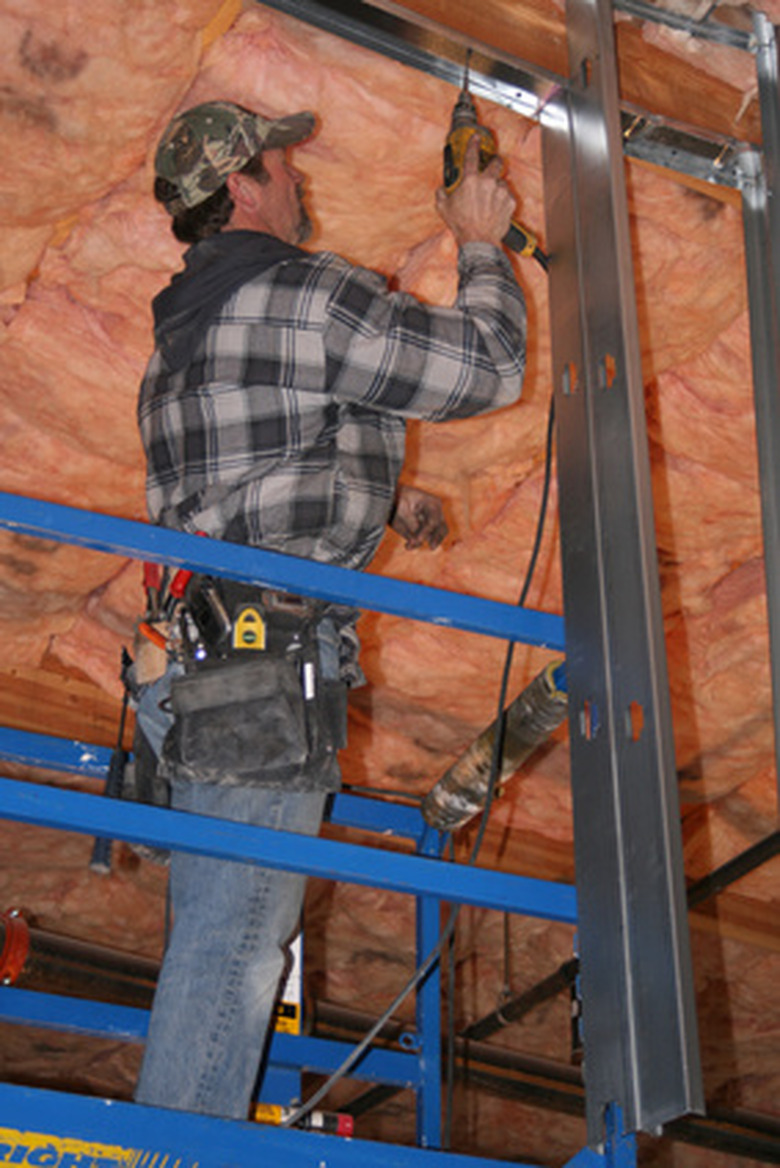How To Calculate For Steel I Beams
Engineers use a structure's area moment of inertia to describe how well it resists load stresses. A beam with a higher area moment of inertia is less likely to bend or deflect when a load applies a force to it. Calculus determines this second moment of inertia for irregularly shaped beams. Rectangular beams, however, offer a simple formula for determining their moments of inertia. Calculate an I-beam's second moment of inertia by dividing it into sections and calculating each one's inertia.
Step 1
Raise the length of either of the I-beam's flanges to the power of three. If, for instance, each of the flanges are 6 inches long: 6 ^ 3 = 216.
Step 2
Multiply this answer by each flange's width. If each flange is 0.75 inches wide: 216 x 0.75 = 162.
Step 3
Multiply this answer by 2 to account for the two flanges: 162 x 2 = 324.
Step 4
Raise the distance between the flanges, which is the length of the webbing, to the power of 3. If, for instance, this distance equals 8 inches: 8 ^ 3 = 512.
Step 5
Multiply this answer by the width of the webbing. If the webbing is 0.75 inches wide: 512 x 0.75 = 384.
Step 6
Add the answers to Steps 3 and 5: 324 + 384 = 708.
Step 7
Divide this answer by 12: 708 / 12 = 59. The result is the I-beam's area moment of inertia, measured in inches raised to the power of 4.
Cite This Article
MLA
Menezes, Ryan. "How To Calculate For Steel I Beams" sciencing.com, https://www.sciencing.com/how-7927792-calculate-steel-beams/. 7 August 2017.
APA
Menezes, Ryan. (2017, August 7). How To Calculate For Steel I Beams. sciencing.com. Retrieved from https://www.sciencing.com/how-7927792-calculate-steel-beams/
Chicago
Menezes, Ryan. How To Calculate For Steel I Beams last modified March 24, 2022. https://www.sciencing.com/how-7927792-calculate-steel-beams/
